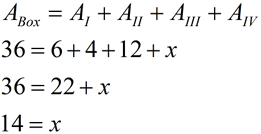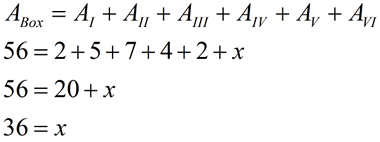Sides are parallel to the axes: |
COUNT to find the needed lengths.
The base of the triangle lies ON the grids of the graph paper (horizontal), and the altitude (vertical height) also lies ON the grids of the graph paper, since it is perpendicular to the base.
By counting, the base length is 7 units and the altitude is 3 units.
Use the area of a triangle formula:

The answer is 10½ square units.
AC can also be found by subtracting the x-coordinates of the two points (4 - (-3) = 7). Since the base of the altitude is located at (2,1), the altitude can be found by subtracting the y-coordinates (4 - 1 = 3).






